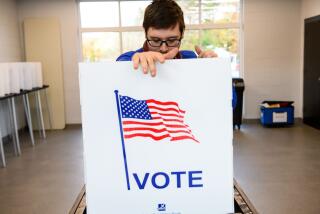Children of the storm
On the last day of “Dr. Seuss week” at our New Orleans arts camp, my 6-year-old son proudly brought me his new cardboard house. He’d built it from shoe boxes and paper-towel rolls, topping his red-and-white-striped roof with a fantastic stovepipe chimney. A few days later, I took another look at his creation and noticed something else: He’d also taken a blue marker and drawn a wave around the walls and then carefully curved the line over the door. “That’s Katrina,” he explained to me. “I remember that it came in through the front.”
Not long after that, we met up with old friends who had stayed in the city during the flood. They’d spent a fearful week trapped inside a hospital, surrounded by the rank water. Surrounded by chaos, their youngest son, now 9 and a lively boy with a soft laugh, frequently wondered aloud if he was going to die. His mother told me how he watches weather reports every night, searching for the next hurricane. He has panic attacks during storms.
It’s been two years since Katrina. Two years since my family evacuated, driving off for a weekend and never really coming back. Everyone in New Orleans experienced different consequences from Katrina -- for us, the most immediate result was that my wife, a pediatrician, lost her job. We made a painful decision: We sold our house, which didn’t flood, and moved with our two children to Illinois.
Yet we continue to return for visits, including this summer, when our kids attended their old camp at the downtown Contemporary Arts Center. We return because our close friends live there. We also return because I believe that New Orleans must be part of my children’s future as well as their past. New Orleans is a teachable moment. What can happen when the safety and well-being of 500,000 people are neglected? How do ordinary people tap into their reserves to rebuild communities?
The kids and I have versions of these conversations during each 950-mile drive south, as we play our New Orleans music and start to feel hunger pangs for our favorite New Orleans food. They like the Bruce Springsteen song that goes, “There’s bodies floatin’ on Canal and the levee’s gone to hell,” and they know what he’s singing about. It’s not the family trip I would have anticipated two years ago. I hope that my son and daughter will be fine, and, judging from my son’s Seussian house, I have reason to believe that they will continue to be engaged -- creatively, intellectually, spiritually -- with their hometown.
Yet I also must admit that I don’t know the long-term effects of these last 24 months of witnessing tragedies and experiencing upheaval. I can’t help but wonder: Does she not want to be alone because the events of the last two years have made her more uncertain? Is he quiet because he’s thinking about the sad things he saw and heard? Should I be sheltering them from all this instead of driving them into the heart of it?
Unlike so many New Orleanians, we had options. We lived in Uptown New Orleans, on relatively high ground. We did not have to spend months gutting our house and fighting our insurance company. Nor did we mourn family members who drowned.
Instead, we are more acquainted with Katrina’s collateral damage. We have lost friends to suicide. We’ve seen other friends’ marriages crumble. We listen to stories about depression and sudden tempers. We watch as our friends make the best of it in a city that is still unprotected from the next bad storm.
In New Orleans, the term for all this is “the new normal.” For many children growing up there, it is now normal to live in a city still decimated. “We’re living in Lakeview right now, all the houses have Xs on them,” said Paulette Carter. “My children are 2 and 3; they don’t know anything different. To them it’s normal to have houses all around you that are unoccupied and gutted.”
Carter is a social worker and president of the Children’s Bureau of New Orleans, which has been providing crisis counseling for kids in New Orleans, where post-traumatic stress disorder is also part of the new normal.
Research on kids with PTSD shows that their stress doesn’t only result from a specific traumatic event such as a hurricane, it rides on the aftershocks. Each unsettling change in a child’s life triggers new symptoms. For many kids in New Orleans, nothing -- not their schools, their extended family network, their parents, their friends, their home -- is the same as it was. Furthermore, hundreds of children are still living in FEMA encampments with no playgrounds, fenced in and patrolled by armed security guards. For these kids, Katrina is just beginning.
Despite valiant efforts by Carter and others, there is precious little long-term counseling available for children in the city. Two years after the flood, Carter is still worried. National interest is waning. Charitable donations are drying up. The new normal might become an even sadder place.
Those of us who got out in time watched our city drown. We saw our neighbors on rooftops and outside the Convention Center. Now we must go back, again and again. We can’t take our eyes off it. To do so would be to forget, and that would be a disaster.
More to Read
The biggest entertainment stories
Get our big stories about Hollywood, film, television, music, arts, culture and more right in your inbox as soon as they publish.
You may occasionally receive promotional content from the Los Angeles Times.










